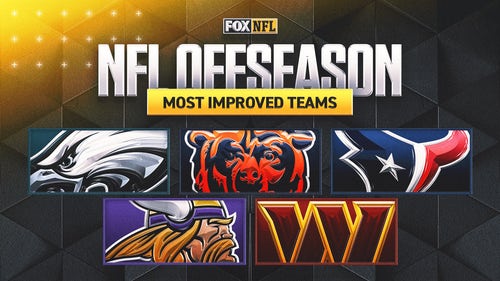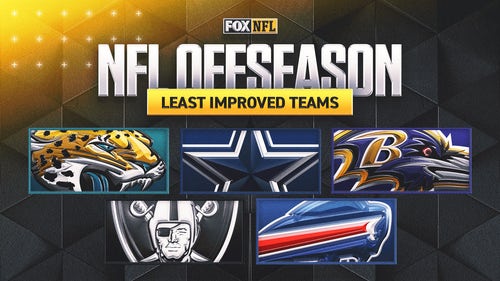
Jurors in Aaron Hernandez trial will take several field trips

FALL RIVER, Mass. – Jurors who will consider the murder case against former football star Aaron Hernandez will take an extensive field trip – visiting not only the scene of the slaying but the home in Boston that Odin Lloyd left shortly before he was killed and other locations.
Jurors will visit Hernandez’s mansion in North Attleboro, Mass., and the locations of cellular communications towers that prosecutors plan to highlight in their effort to place the former New England Patriots tight end in specific locations at specific times in the hours leading up to the murder.
Judge E. Susan Garsh allowed the visits – known legally as “taking a view” – in a series of rulings Tuesday morning on the eve of Hernandez’s murder trial in the June 17, 2013, killing of Odin Lloyd.
Lloyd, a 27-year-old semi-professional football player, was dating the sister of Hernandez’s fiancée.
Hernandez, 25, faces one count of murder and two firearms charges in the killing of Lloyd, who was gunned down in a secluded field less than a mile from the player’s home.
Prosecutors allege that Hernandez summoned two associates from his hometown, Bristol, Conn., to his Massachusetts home late the night of June 16, 2013, and simultaneously made plans to meet with Lloyd. They further allege that Hernandez and the other two men, Carlos Ortiz and Ernes Wallace Jr., drove to the Dorchester neighborhood of Boston, picked up Lloyd, and returned to North Attleboro.
There, according to court documents, Hernandez drove into a secluded area in an industrial park that is surrounded by woods and mounds of asphalt, gravel and dirt. There, Lloyd was shot multiple times – a jogger found his body about 14 hours later.
Although prosecutors have not said who they believe fired the fatal shots, they have asserted that Hernandez “orchestrated” the killing. Ortiz and Wallace have also been indicted on murder charges but will be tried separately. The prosecution does not plan to call either as a witness in the trial.
The process of picking a jury for Hernandez’s trial begins Friday.
Both prosecutors and defense attorneys requested that the jury be taken to locations involved in the crime – part of a flurry of motions filed in recent day by both sides. But the two requests differed – and set the stage for impassioned arguments from the lawyers.
The biggest disputes came over the prosecution’s request to take jurors to four separate cell towers and the defense’s request to take them into all areas of Hernandez’s home.
Among the evidence prosecutors plan to introduce are extensive cell phone records they contend show that Hernandez summoned Ortiz and Wallace to his home, set up the meeting with Lloyd, drove to Boston to pick him up and then returned to North Attleboro. Hernandez’s attorneys indicated they intend to fight to exclude some or all of that evidence, although to date the judge has ruled that it can be admitted.
William McCauley, the lead prosecutor, argued that visiting the cell tower sites will help jurors understand “the general location of the defendant, essentially, in the hour prior to the homicides.”
He also asked to visit a gas station where Hernandez, Ortiz and Wallace allegedly stopped on the way to pick up Lloyd; the Dorchester street where they will argue Lloyd got into a rented Nissan Altima driven by Hernandez; a toll booth Hernandez allegedly drove through on the way back to North Attleboro; the murder scene; and the former player’s home.
The request for so many locations drew fire from defense attorney Jamie Sultan.
“This is not a view in the traditional classic sense of showing the jury the key place where this thing happened,” Sultan said. “What they want to do is essentially re-enact their theory of the case. It’s a story. It’s a narrative, re-enacted by the judge on a bus. … This is essentially their effort to wed the jury to their theory of the case with the imprimatur of the court.”
Not so, McCauley argued.
“This is routine, and views have been used consistently in homicide cases. … that is the purpose of the view. It’s not improper, so they (the jury) can have some orientation,” he said.
The defense, on the other hand, sought to take the jury to the murder scene and to Hernandez’s home – and successfully fought off an effort by McCauley to have Hernandez’s family photos and sports memorabilia covered. Jurors, he argued, might be swayed by Hernandez’s celebrity if they see framed jerseys, sports awards and other items displayed in his home. He suggested that it was akin to the O.J. Simpson case, where family photographs were placed inside the player’s home before a jury considering his murder case visited.
“It’s just an attempt to draw the jury’s attention to items that are not in evidence,” McCauley said.
Sultan argued, however, that home looks exactly today as it did on the day of the murder, and covering up Hernandez’s awards and photos would amount to altering reality.
“The trial is about reality,” Sultan said. “The fact that Mr. Hernandez played for the Patriots is in this case. We can’t change that.”
Ultimately, Garsh allowed the visit to the cell towers, to the street in Boston where Lloyd was picked up, to the murder scene and to Hernandez’s home.
She said that maps, charts, photos and videos would be sufficient for jurors to understand the location of the filling station, the toll booth, and a spot near Hernandez’s home where investigators found a pistol that has been tied to the former player. Garsh denied a request from Sultan for Hernandez to be allowed to attend the jury’s visit to the various locations.
Judge Garsh also ruled that Hernandez’s mother and fiancée, Shayanna Jenkins, can attend the trial despite the fact they are expected to be called as witnesses. Garsh, too, said Lloyd’s mother, Ursula Ward, sister, Shaquilla Thibou, and girlfriend, Shaneah Jenkins, can attend every day of the trial.
Judge Garsh indicated she may schedule another hearing later in the week to consider a series of motions that she did not take up Tuesday because one side or the other asked for more time to respond.
Among them:
* A prosecution motion to allow testimony from a longtime friend of Hernandez’s that the player said he had a .45-caliber handgun in California in April 2013 – the same caliber of weapon used to kill Lloyd.
* A prosecution motion to prohibit any testimony for a defense expert on the effects of the drug PCP.
* A defense motion for additional forensic testing on “a small item of physical evidence,” which was not specified in court.
* A defense motion to block Alexander Bradley from testifying. Bradley, a longtime friend of Hernandez’s, has alleged the player shot him in the face in Florida in February 2013.
* A defense motion requesting that the prosecution be required to disclose charts it plans to use at trial.
The first step in jury selection begins Friday, when prospective panel members begin arriving in groups of 125 to fill out extensive written questionnaires.
In all, 1,125 prospective jurors are expected to go through that process, which is scheduled to conclude Jan. 13. Prosecutors and defense attorneys then will have a day with those questionnaires to consider which prospective jury members should be dismissed for “cause” – for instance, a person who had a personal connection to someone involved in the case would be barred from serving. On Jan. 15, the attorneys on both sides will meet with Judge Garsh to complete that process.
The following day, the process of voir dire begins – prospective jurors will be brought into the courtroom in groups, where they will be questioned by the judge. Both sides will be allowed to request dismissals for cause and will also have the right to throw out another 12 jurors under what are known as “peremptory” challenges. In those cases, the attorneys do not have to articulate a reason to dismiss a prospective juror.
It’s expected to be Jan. 20, at the earliest, before a jury of 18 – which will include six alternates – is selected and opening statements are held.
Hernandez has separately been indicted on multiple murder and assault charges in a July 16, 2012, shooting in South Boston that left two men dead and another wounded.
In the Boston killings, prosecutors have alleged that Hernandez became enraged after a man bumped him on a nightclub dance floor, spilling his drink, and failed to apologize. Later, they alleged that Hernandez followed the man and his friends as they drove away from the club, then pulled up next to their car at a stoplight and opened fire with a .38-caliber revolver, killing Daniel De Abreu, 29, and Safiro Furtado, 28, and wounding another man.
That trial was originally scheduled to begin May 28, but the judge there indicated recently he would push it back given the anticipated length of the trial in the Lloyd case. No new trial date has been set.















































































































































